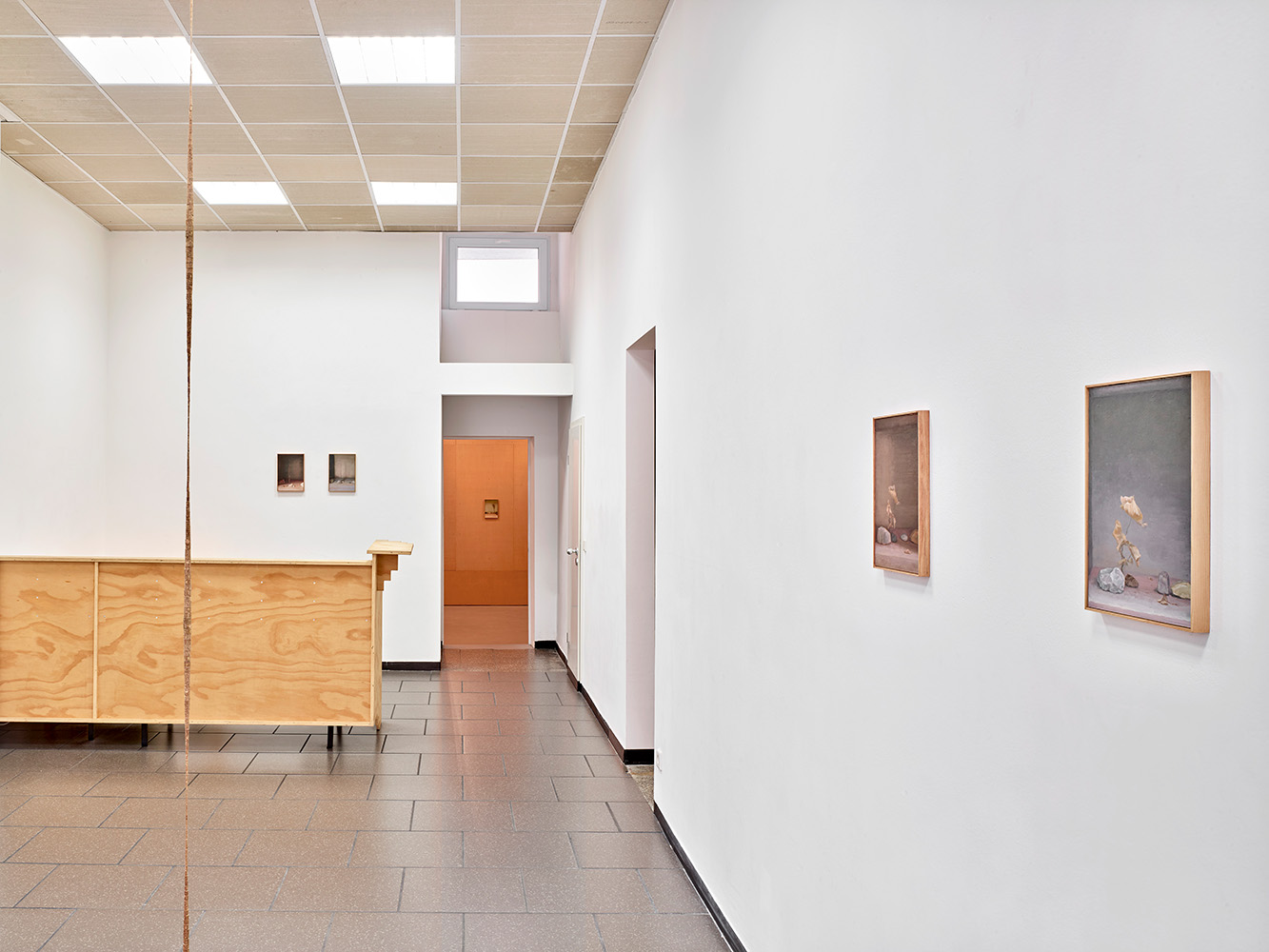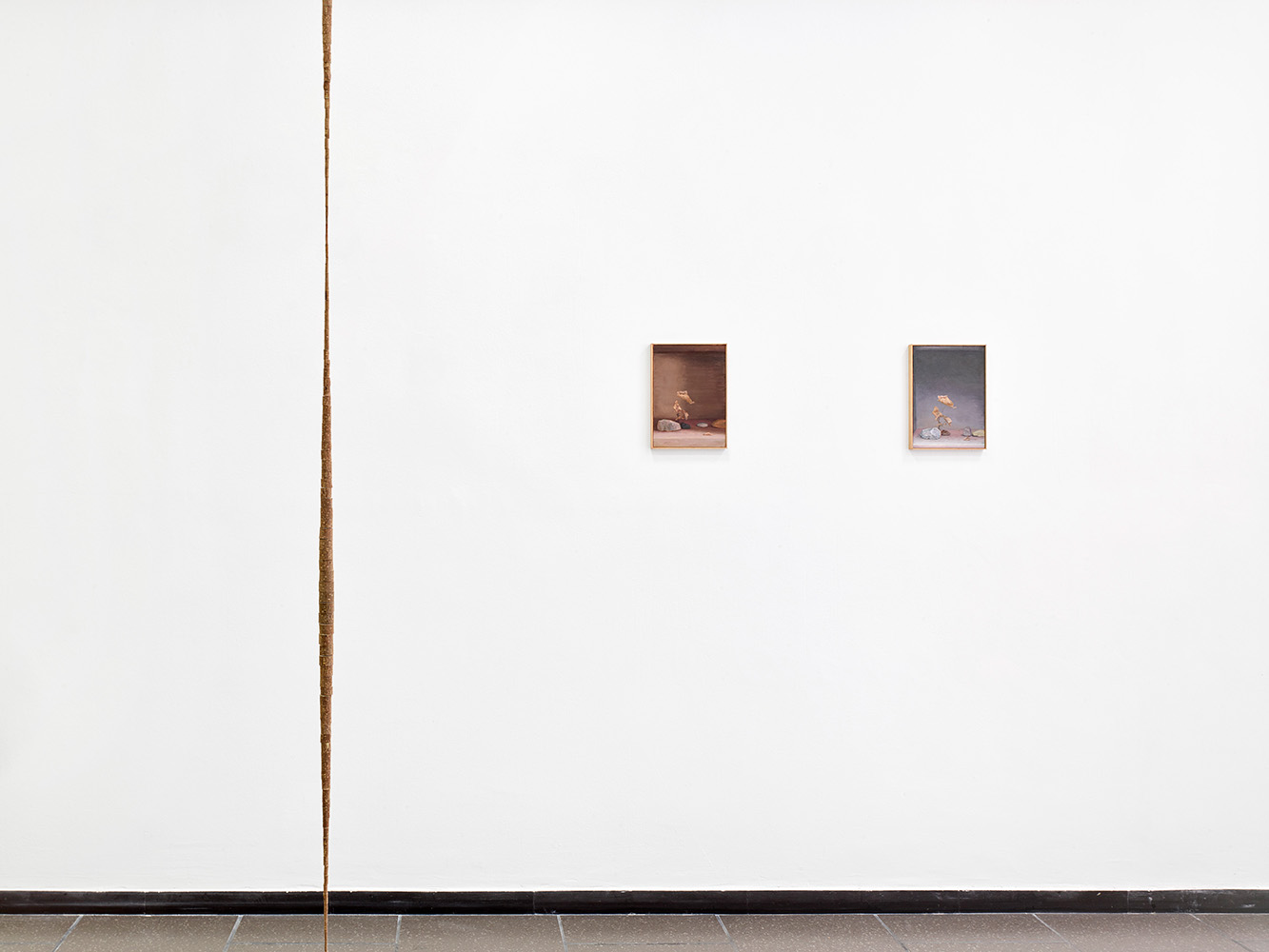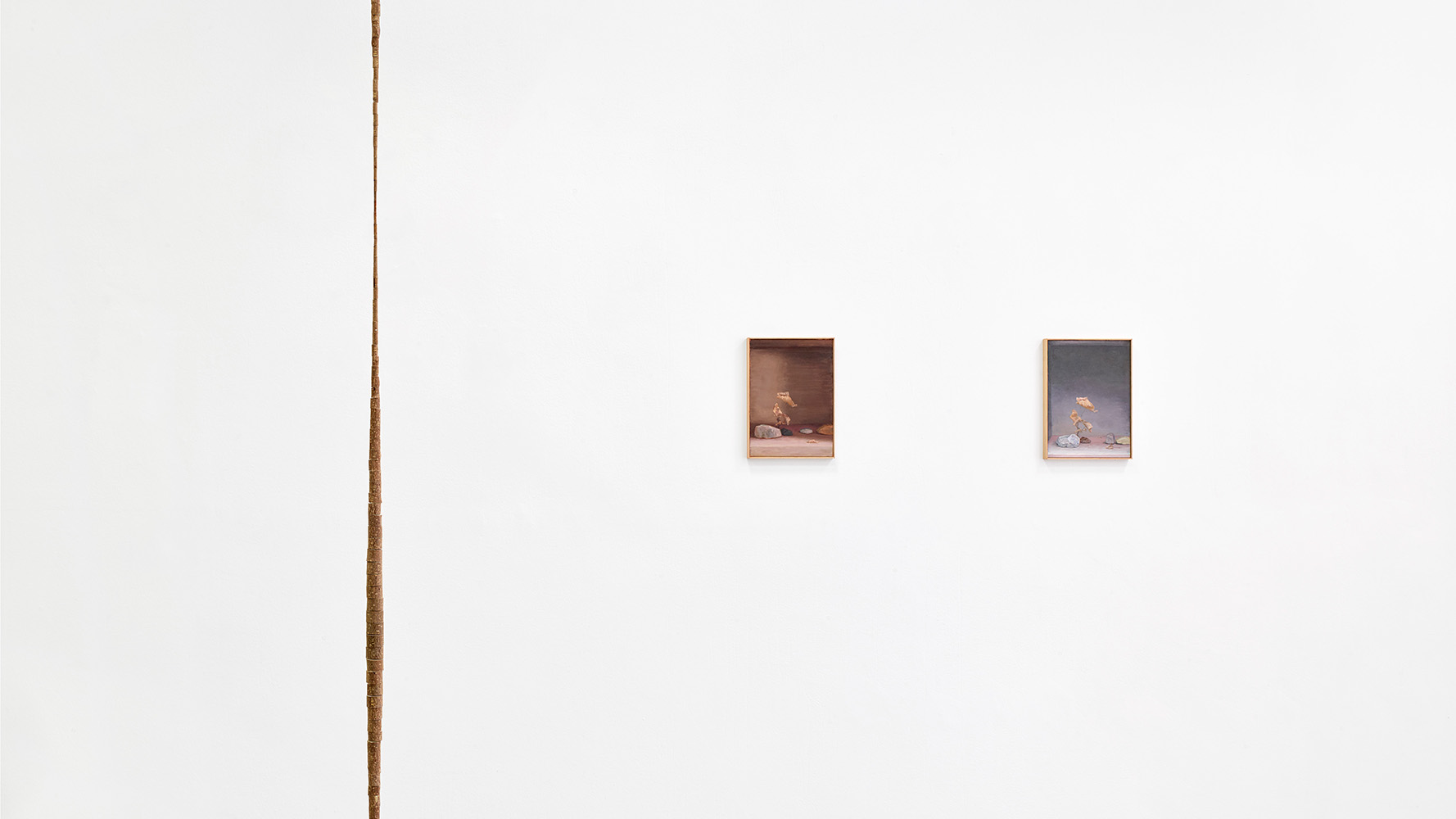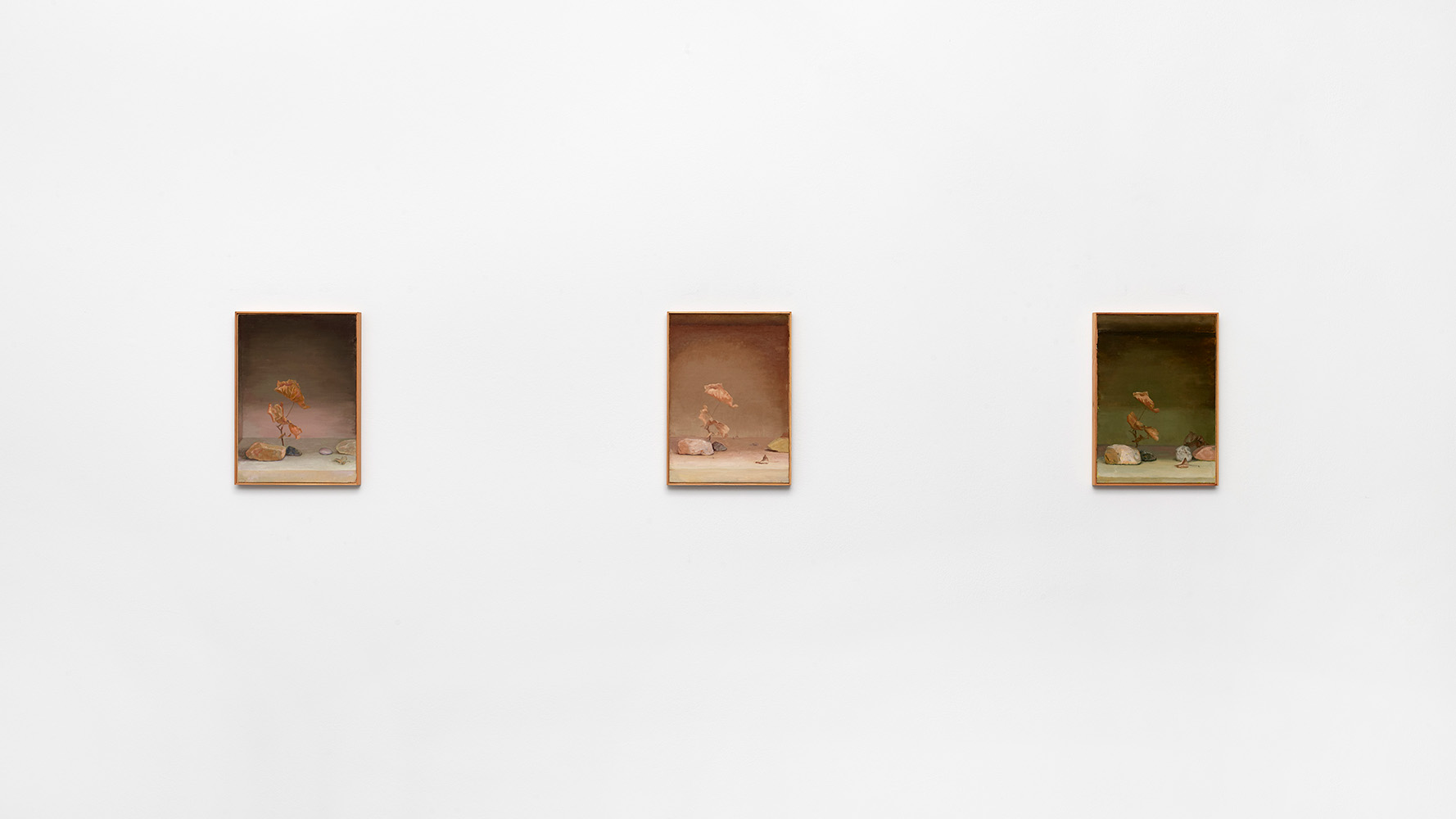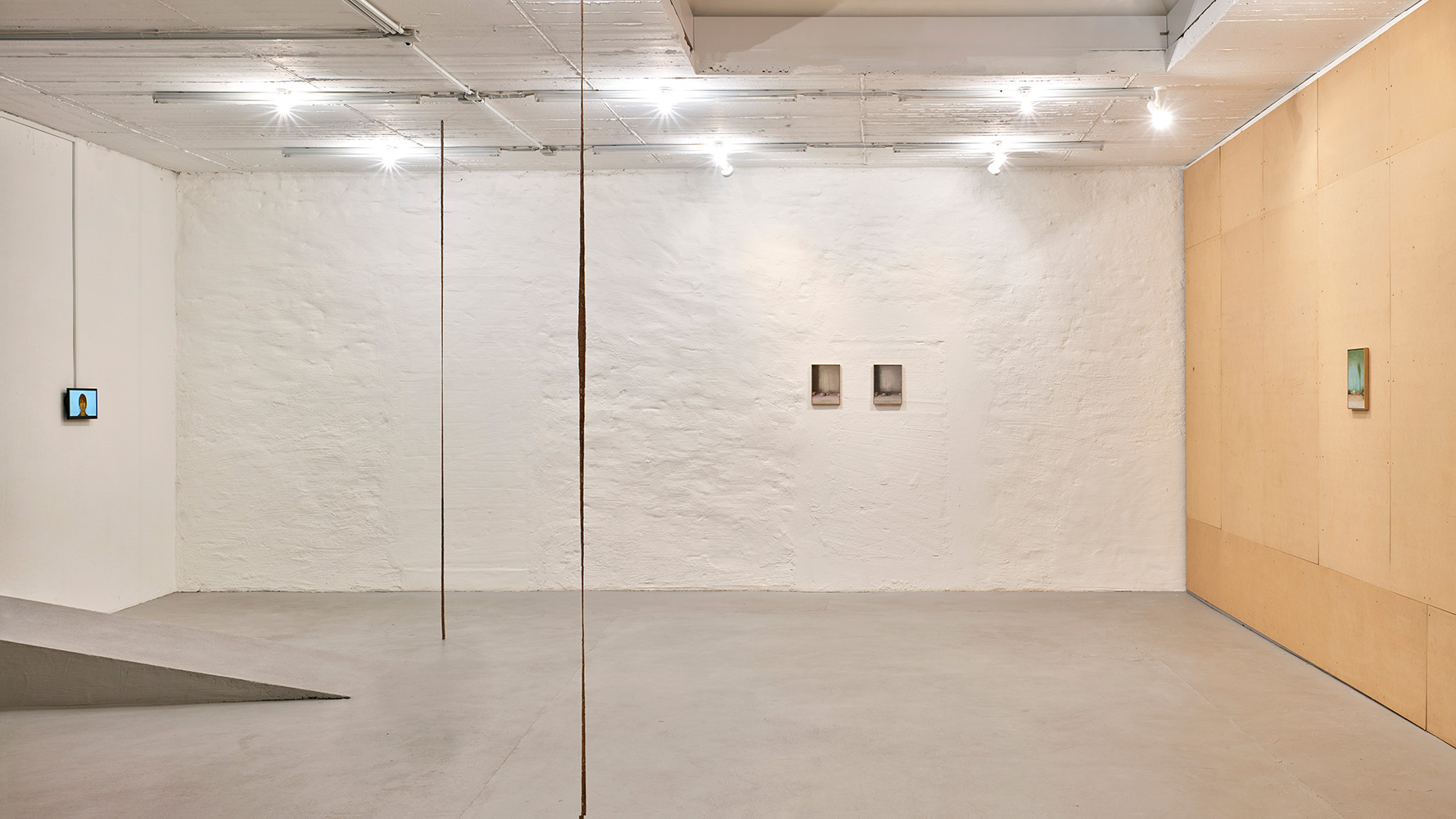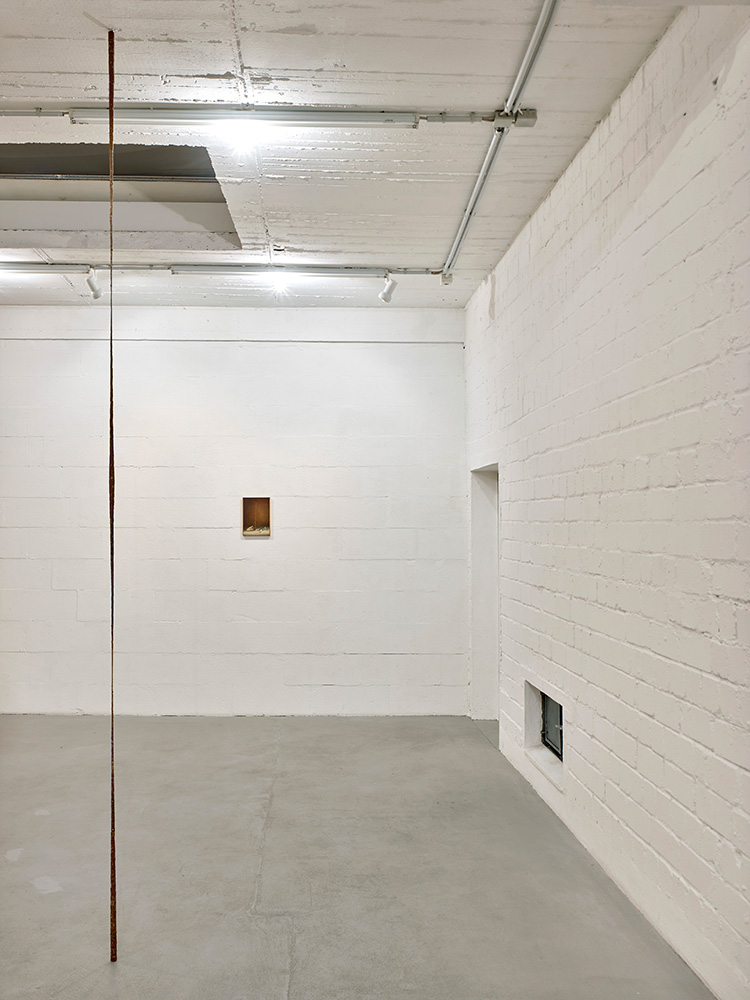Albrecht Schäfer
Im Augenblick Habe Ich Zeit
Nov 06–Dec 31, 2021
“At the moment I have time”
Usually we don’t have any time, certainly not at the moment—and at best for a moment. But those who have time for a moment in Albrecht Schäfer’s exhibition pause for a moment to engage with one of the greatest philosophical questions, the question of time. It is the Berlin-based artist’s first solo exhibition with Galerie Petra Rinck.
Since time is fleeting, it is precious. Although time is eternal, it is fleeting. Between the fleeting moment of the blink of an eye and the infinite duration of eternity, there is both a causal and a concessive relationship, one that Albrecht Schäfer traces in his observation of everyday situa-tions: How long does a moment last? How does time materialize? How can time be visualized?
In the installation “Augenblick” (2011), we only see a close-up of the artist’s head on a moni-tor, staring straight into the camera. Soon enough, we realize that the flickering of the lights in the room is synchronized to the blinking of his eyes. A human blinks about 10 to 15 times per minute, or every 4 to 6 seconds. The dark period caused by the closing of the eyelids is so short that it is not consciously perceived. Once transferred to the room’s lighting, however, this “blink of an eye” becomes experienceable as the smallest, just barely perceptible duration of time.
On the other hand, the stones arranged with a withered leaf or branch to form painted still lifes symbolize the opposites of eternity and transience. In various series of grisailles with subtle shades of color, they become literal Natures Mortes—dead natures that form lifeless landscapes in the pictorial space. No larger than DINA4, they appear like monumental gems of parsimonious preciousness and sublime beauty.
The chains reaching from the floor to the ceiling are made of hundreds of segments of a single branch and function as a link between fleeting moments and steadfast still lifes. Like pearls on a thread, the tiny branch segments pierced with a hole string together to create a new spatiotempo-ral order in contrast to their natural growth. “When the branch segments are next to each other, I sometimes think of notes, and each note has a slightly different duration. The thin ones are maybe three months old, the thick ones are three years old. For me, the expansion and contraction of the line is also a back and forth in time.” (Albrecht Schäfer)
Free from the pressures of the zeitgeist, Albrecht Schäfer’s art enables precisely what Michael Theunissen describes in “Freedom from Time”: it invites us to linger in aesthetic contemplation.
Dorothea Zwirner 2021
(translation: Good & Cheap)
Meist haben wir keine Zeit, schon gar nicht im Augenblick – allenfalls einen Augenblick. Doch wer im Augenblick Zeit hat, der hält einen Moment inne, um sich in der gleichnamigen Ausstellung von Albrecht Schäfer auf eine der größten philosophischen Fragen einzulassen, die Frage nach der Zeit.
Weil die Zeit vergänglich ist, ist sie kostbar. Obwohl die Zeit ewig ist, ist sie flüchtig. Zwischen dem flüchtigen Moment eines Augenblicks und der unendlichen Dauer der Ewigkeit gibt es sowohl einen kausalen als auch einen konzessiven Zusammenhang, dem Albrecht Schäfer in der Beobachtung alltäglicher Situationen nachspürt: Wie lange dauert ein Augenblick? Wie materialisiert sich die Zeit? Wie lässt sich Zeit sichtbar machen?
In der Installation „Augenblick“ (2011) sehen wir nur den Kopf des Künstlers in Nahaufnahme auf einem Monitor, starr geradeaus blickend und realisieren schnell, dass das Flackern des Raumlichts mit dem Blinzeln seiner Augen gekoppelt ist. Pro Minute blinzelt ein Mensch etwa 10 bis 15 Mal, also alle 4 bis 6 Sekunden. Die durch den Lidschluss bedingte Dunkelphase ist so kurz, dass sie nicht bewusst wahrgenommen wird. In der Übertragung auf das Raumlicht wird der „Augenblick“ jedoch erfahrbar als kleinste, gerade noch wahrnehmbare Zeitdauer.
Dagegen sind die Steine, die mit einem welken Blatt oder Ast zu gemalten Stillleben arrangiert sind, Sinnbilder für den Gegensatz von Ewigkeit und Vergänglichkeit. In verschiedenen Serien von Grisaillen mit subtilen Farbnuancen sind es buchstäbliche Natures Mortes – tote Naturen, die sich im Bildraum zu leblosen Landschaften formieren. Nicht größer als DINA4 erscheinen sie wie monumentale Kleinode von karger Kostbarkeit und sublimer Schönheit.
Als Bindeglied zwischen flüchtigen Augenblicken und ehernen Stillleben fungieren die Ketten, die vom Boden bis zur Decke reichen und aus hunderten von Segmenten eines einzelnen Astes bestehen. Wie Perlen auf einer Schnur reihen sich die winzigen mit einem Loch versehenen Astsegmente aneinander, um – anders als gewachsen – eine neue Ordnung von Raum und Zeit zu schaffen. „Wenn die Astsegmente nebeneinander liegen, denke ich manchmal an Noten und jede Note hat eine etwas andere Länge. Die dünnen sind vielleicht drei Monate alt, die dicken drei Jahre. Das An- und Abschwellen der Linie ist für mich so gesehen auch ein Hin und Her in der Zeit.“ (Albrecht Schäfer)
Frei von zeitgeistigem Druck ermöglicht Albrecht Schäfers Kunst genau das, was Michael Theunissen in „Freiheit von der Zeit“ beschreibt: Sie lädt ein zum Verweilen in der ästhetischen Anschauung.
Dorothea Zwirner 2021

